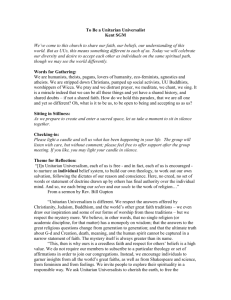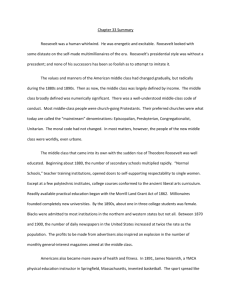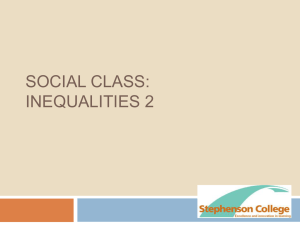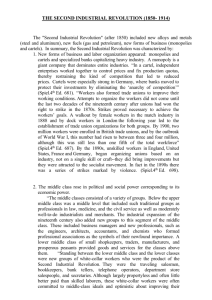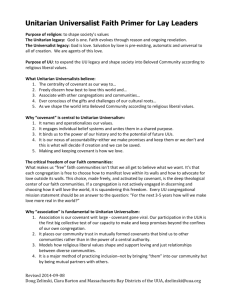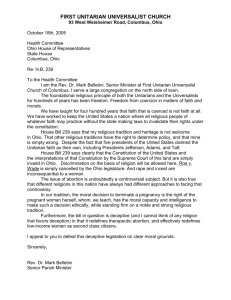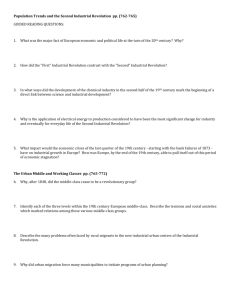Beyond the Seven Principles: The Core of Our Faith
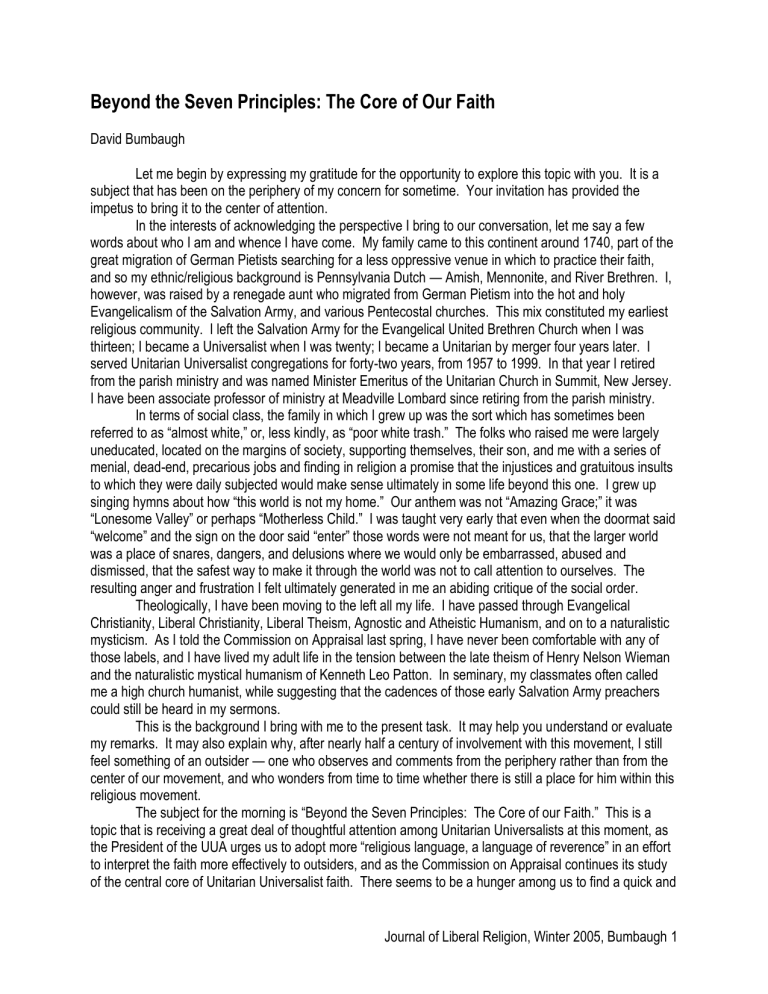
Beyond the Seven Principles: The Core of Our Faith
David Bumbaugh
Let me begin by expressing my gratitude for the opportunity to explore this topic with you. It is a subject that has been on the periphery of my concern for sometime. Your invitation has provided the impetus to bring it to the center of attention.
In the interests of acknowledging the perspective I bring to our conversation, let me say a few words about who I am and whence I have come. My family came to this continent around 1740, part of the great migration of German Pietists searching for a less oppressive venue in which to practice their faith, and so my ethnic/religious background is Pennsylvania Dutch — Amish, Mennonite, and River Brethren. I, however, was raised by a renegade aunt who migrated from German Pietism into the hot and holy
Evangelicalism of the Salvation Army, and various Pentecostal churches. This mix constituted my earliest religious community. I left the Salvation Army for the Evangelical United Brethren Church when I was thirteen; I became a Universalist when I was twenty; I became a Unitarian by merger four years later. I served Unitarian Universalist congregations for forty-two years, from 1957 to 1999. In that year I retired from the parish ministry and was named Minister Emeritus of the Unitarian Church in Summit, New Jersey.
I have been associate professor of ministry at Meadville Lombard since retiring from the parish ministry.
In terms of social class, the family in which I grew up was the sort which has sometimes been referred to as “almost white,” or, less kindly, as “poor white trash.” The folks who raised me were largely uneducated, located on the margins of society, supporting themselves, their son, and me with a series of menial, dead-end, precarious jobs and finding in religion a promise that the injustices and gratuitous insults to which they were daily subjected would make sense ultimately in some life beyond this one. I grew up singing hymns about how “this world is not my home.” Our anthem was not “Amazing Grace;” it was
“Lonesome Valley” or perhaps “Motherless Child.” I was taught very early that even when the doormat said
“welcome” and the sign on the door said “enter” those words were not meant for us, that the larger world was a place of snares, dangers, and delusions where we would only be embarrassed, abused and dismissed, that the safest way to make it through the world was not to call attention to ourselves. The resulting anger and frustration I felt ultimately generated in me an abiding critique of the social order.
Theologically, I have been moving to the left all my life. I have passed through Evangelical
Christianity, Liberal Christianity, Liberal Theism, Agnostic and Atheistic Humanism, and on to a naturalistic mysticism. As I told the Commission on Appraisal last spring, I have never been comfortable with any of those labels, and I have lived my adult life in the tension between the late theism of Henry Nelson Wieman and the naturalistic mystical humanism of Kenneth Leo Patton. In seminary, my classmates often called me a high church humanist, while suggesting that the cadences of those early Salvation Army preachers could still be heard in my sermons.
This is the background I bring with me to the present task. It may help you understand or evaluate my remarks. It may also explain why, after nearly half a century of involvement with this movement, I still feel something of an outsider — one who observes and comments from the periphery rather than from the center of our movement, and who wonders from time to time whether there is still a place for him within this religious movement.
The subject for the morning is “Beyond the Seven Principles: The Core of our Faith.” This is a topic that is receiving a great deal of thoughtful attention among Unitarian Universalists at this moment, as the President of the UUA urges us to adopt more “religious language, a language of reverence” in an effort to interpret the faith more effectively to outsiders, and as the Commission on Appraisal continues its study of the central core of Unitarian Universalist faith. There seems to be a hunger among us to find a quick and
Journal of Liberal Religion, Winter 2005, Bumbaugh 1
easy way to formulate the essential elements of our gospel, a confessional statement, if you will, which will capture the central truth of our tradition. This is an old hunger which has gnawed at us periodically throughout our history. And yet, throughout that same history, every effort to define the core of our faith in terms of a confessional statement has failed to generate the unity, the coherence, the sense of clarity we seek. Whether we are talking about William Channing Gannett’s “Things Commonly Believed Among Us” or the theological work of Thomas B.Thayer or Orello Cone in the 19th century, or the work of Henry
Nelson Wieman and James Luther Adams in the 20th, or even our currently hallowed, sanctified Seven
Principles, every effort to provide a confessional answer to the question of what is at the core of our faith, only generates greater division, conflict and dissension in our ranks. As Earl Morse Wilbur reminded us at the close of his magisterial history of Unitarianism, at one time or another our ancestors have embraced almost every theological position imaginable. When left to their own devices, he argued, they abandoned confessional statements and embraced a practice of “freedom, reason, and tolerance.”
Mulling over this historic insight, I found myself remembering the myth of Parsival and the quest for the Holy Grail. You may recall that in some versions of the old legend, at the penultimate moment, standing in the grail castle, with the the vision of the grail floating before his eyes, Parsival failed in his quest for the grail because he was unable to ask the right question. The question was not, “What is the
Grail?” or “What do I believe about the Grail?” or “What understanding of the grail do we hold in common?” or “How can I grasp the meaning of the grail so I can explain it to others?” The right question was “Whom does the Grail serve?” Solving a riddle, often depends upon asking the right question.
Perhaps we find ourselves in our own Grail castle, staring at the object of our quest and unable to grasp it precisely because we are asking the wrong question. Perhaps the core of our faith cannot be captured by a confessional statement which seeks to answer the question, what beliefs do Unitarian
Universalists hold in common? Perhaps the core of our faith is not theological but rather experiential.
Perhaps the foundation of our faith can best be grasped by asking the question, “Whom does Unitarian
Universalism serve?”
This shift from a theological to an experiential, even a sociological perspective offers us a different set of insights into the nature of the religious venture in general and of our religious institution in particular.
I would argue that religious movements come into being, endure and succeed or fail in direct relation to their ability to respond to the existential needs of the people they serve. I told you a few moments ago that
I grew up in the Salvation Army. This was a creedless religious movement, one with a very spare liturgical tradition. For example, as a child in the Salvation Army, I was not baptized nor did I ever witness a baptism. We had no confirmation process. There was no observance of communion among us. There was no lectionary or liturgical year to follow. We did not receive ashes on our foreheads on Ash
Wednesday; we did not observe Maundy Thursday. The religious life of that movement, as I experienced it, was intensely focused on the weekly worship services which emphasized preaching and the proclamation of the Gospel. In many ways, it was like Unitarian Universalism, except it was nothing like
Unitarian Universalism. It served a different people. It served the poor, the marginalized, men and women who had little realistic hope that society would ever treat them with justice, let alone respect and concern.
And so the evangelical gospel of that movement, as I experienced it, was one of consolation based on the promise that in some world beyond this one, all the wrongs would be righted, all the pain explained and faithfulness rewarded.
It was a religion which focused not on transformation but upon endurance, upon helping its people avoid being consumed by their anger and frustration, helping them find ways to make it through from one day to the next. And so, together, we sang:
Tempted and tried, we’re oft made to wonder
Why it should be thus all the day long
Journal of Liberal Religion, Winter 2005, Bumbaugh 2
While there are others living about us,
Never molested, though in the wrong.
Farther along, we’ll know all about it;
Farther along, we’ll understand why.
Cheer up my brother and live in the sunshine.
We’ll understand it all by and by.”
If you look at that church in which I grew up from a confessional point of view, it was just another expression of evangelical fundamentalism. If, however, you ask, “Whom does this church serve,” its peculiar message, its specific practices, its underlying values come into sharp, clear focus.
By the same token, if we ask, “Who is served by Unitarian Universalism” we come at the core of our faith from a very different angle. The answer to that question, whether we like it or not, is that historically Unitarian Universalism has served the emergent middle-class, (dare I say, mostly the Euro-
American emergent middle class). This is not a fact that we find ourselves able to embrace comfortably.
The middle-class nature of our movement is, for many of us, a source of deep embarrassment and profound disappointment, almost shame. A few years ago, in its report entitled Interdependence, the
Commission on Appraisal seemed to suggest that many of our institutional problems are rooted in middleclass assumptions and that until we can break free of the middle-class captivity of our churches, we will never fully realize our potential as a movement. Underlying this suggestion is a conviction that our middleclassness is somehow an accident of this historic moment, that Unitarian Universalism is, or once was, or can become a classless faith. If, however, the central question in defining the core of our faith is “Whom do we serve?” it seems clear that the middle-class nature of our movement is not accidental — it is foundational. The faith was not captured by the middle-class; it emerged with and always was middleclass. It grew out of, emerged from, and reflects — for better and for worse — the experience and the needs of the emergent middle-class.
Let be clear about what I am not saying. I am not suggesting that all middle-class people are
Unitarian Universalists. Nor am I implying that Unitarian Universalism is the quintessential middle-class religion. I am simply suggesting that the circumstances of our origin have left their traces in our subsequent development. Both chaos theory and systems theory suggest that the subsequent development of open systems remains highly sensitive to initial conditions. The beginnings have a way of deeply influencing the subsequent development of an open system. I am suggesting that our origins in the emergent middle-class provides a lens that helps us understand who we are, why we are as we are and ultimately, why we believe as we do.
It must be obvious by this time, that we need a definition of the middle-class that is more nuanced than the gross, economically based definition we commonly use. The middle-class, as I am using the term is not simply those people who are located midway between the obscenely rich and the desperately poor.
Indeed, as Richard Sennett suggests in his book, The Fall of Public Man, middle class is not a fixed location between two extremes. It is defined by fluidity, by movement between those poles and by the sense of possibility, responsibility, insecurity and vulnerability that kind of unstable social location generates.
Sennett’s book is a complex study of the emergence of the middle class in the seventeenth and eighteenth centuries in London and Paris. He offers this simple but elegant definition of a city: “a human settlement in which strangers are likely to meet.” He explores the consequence of large numbers of people moving from encapsulated rural environments into the fluid and amorphous city. He suggests that in this kind of environment, where the familiar, external supports for one’s identity and self-knowledge are missing, where strangers rather than family, friends and other familiar people are the rule, the questions which present themselves with great urgency are: Who am I in this place? How do I relate to these strangers
Journal of Liberal Religion, Winter 2005, Bumbaugh 3
around me, strangers I cannot avoid? How do I know to whom I should defer and who should defer to me?
What role do I play in this public drama? How am I perceived and how am I evaluated? What do people expect of me? What can I expect of myself? Where am I headed? How must I live in this liminal space between success and failure, between anonymity and exposure?
1
Senett’s study is focused upon London and Paris. I would submit, however, that the conditions and circumstances he describes as engendering the emergence of the middle class were even more present in the early European settlement of North America. The conditions of early European settlement all but guaranteed that the nations coming into being on this continent would be middle-class, shaped by the values and the insecurities endemic to the experience of being middle-class and that the religions which would dominate such societies would also reflect the values and insecurities of that middle-class.
The middle-class is, at its root, insecure and transitional. It has risen from and is rooted in some other class, some other social and geographic location; it is on the make; it has pretensions for ever greater social and economic success; and it is haunted by an unshakable fear of failure and possible disaster.
Middle class people often find themselves alienated from their past, from the geographical and emotional communities in which they were reared, from the value systems which structured the lives of parents and kin. Not infrequently, they feel guilt at the seminal act of abandonment and betrayal by which they severed those ties and moved to their current location. They regard as their greatest assets the accumulation of fluid knowledge and portable skills which allow them to carve out a stable and significant role in society.
They are driven to prove their worth, their importance, their gravitas to themselves and to others and find they must prove it over and over again. They hunger for a community of like-minded or at least similarly experienced people who can affirm and validate their worth as individuals, while they simultaneously fear the power of community to expose them as unworthy, as social-climbing impostors. These are the fundamental issues which the middle class brings to the religious enterprise.
If we assume, as I have suggested, that the middle-class experience is foundational to our movement, then these kinds of issues, concerns, experiences have shaped how we understand the religious venture, how we do religion from the very beginning and continue to shape our assumptions and responses to this day, even for those of us who prefer not to think of ourselves as middle class. These issues are at the core of our faith in a more lasting and pervasive way than are any of the theological or confessional statements we may craft from time to time and they help explain why we appeal to the people we attract and why, despite our best efforts, we have limited success in breaking out of that demographic.
How, then, do these roots in the middle-class experience manifest in the life of Unitarian
Universalism? Some answers are obvious. Every study of our movement I know reveals some common statistics: We are a movement of come-outers. Over and over again we are told that our congregations are made up of people who have come to us from some other faith tradition or no faith tradition. Despite our best efforts to “retain our young people” the statistical fact that the vast majority of us are come-outers or come-inners doesn’t change very much over time. In many ways, our congregations reincarnate
Senett’s definition of the city: “a human settlement in which strangers are likely to meet.” We are, by and large, a people alienated from our past, a people who have orphaned ourselves from the communities in which we were reared and we have the same ambivalence about that fact that characterizes the middle class. We want to be recognized as part of a valid religious movement, but we do not want that movement to be confused with the kind of religious community from which we escaped. We want validation of our choices and we feel alienated from our past, all of which creates a constant, low-level ambiguity in our relation to religious community. We seek evidence that the choices we have made are justified, but we are uncomfortable with demands upon us which would limit our options for the future.
Thus, a religious movement which has been shaped by the experience of the emergent middle class is highly ambivalent about community. There is a need for common structures in which we may be affirmed and assured and confirmed in our identity. However, there is a deep and underlying fear of the
Journal of Liberal Religion, Winter 2005, Bumbaugh 4
community’s power to expose and reject us as pretenders and impostors. And so we talk a great deal about the importance of a community of like-minded people who share common values, but we tend to avoid any conversation that has the potential to expose significant differences lest we find that the community for which we sacrificed our earlier ties and primary relationships no longer embraces us, lest we be cast out as unacceptable. (This may be the dynamic which has generated the frequently negative response to Bill Sinkford’s call for a language of reverence. Intentionally or unintentionally he has violated this tacit behavior and in the process threatened our security within our chosen community.) That underlying fear of exposure, of inadequacy and the concomitant need to know how I am perceived by the community is a dynamic we seldom examine but it is constantly at work in our congregations, shaping how we do religion. It often determines how we hear each other. It contributes an abiding tentativeness to the nature of our commitments — to each other, to the institution, and to any given confessional formulation.
And, of course, it translates into a deep ambivalence about authority. We long for an authority that has the power to affirm our acceptability and we resent and fear any authority that might have the power to define us as unacceptable — whether that authority be in some office in Boston, or some historic formulation of the faith, or the preacher in the pulpit, or the committee on social concerns.
It is not surprising, then, that the religion shaped by the middle-class experience would be deeply and profoundly focused upon the future rather than the past. The past is to be escaped, to be forgotten in an effort to embrace the future. While we often disparage the easy optimism of an earlier age, expressed in that old affirmation about human progress onward and upward forever, there remains an underlying optimism, a future oriented faith in progress that can be seen as a projection on a larger screen of the individual’s personal journey. And for many of us, the vehicle of progress, of emergence, the justification of optimism is education — the accumulation of skills and knowledge not tied to place or situation but portable and applicable in a variety of contexts.
Again, every survey of our constituency reaffirms the importance of education to Unitarian
Universalists and the educational attainments of our people are a continuing source of pride among us, often serving to validate the tradition. A quick scan of resolutions passed by our General Assemblies over the years will demonstrate our deep conviction that education is an effective vehicle for personal and social salvation. Our rootedness in the emergent middle-class has produced a profound commitment to selfculture, to self-improvement, to spiritual growth as the religious imperative to which we respond most fully and completely, in which we find satisfaction and affirmation. We may joke about progress onward and upward forever, but our institutional life is rooted in a deep, abiding, often unexamined commitment to selfimprovement, and for many of us, the church exists primarily to foster that process.
I would argue that much of our common language voices our rootedness in the middle-class experience. Thus, “transformation” is a central metaphor our religious life. We define the church as an institution charged with enabling transformation. We believe that religion is about the transformation of society toward a more just order; we believe that religion is about the transformation of the culture to an enlarged understanding of human possibility; we believe that religion is about the transformation of the individual to an enlarged and more capacious sense of self. This metaphor is so much a part of our unexamined truth that we seldom understand how culture and class-bound it is. In an essay entitled
“Preaching as an Art of Resistance”, Christine M. Smith suggests:
Though a transformed world is the ultimate hope that under girds ... ministry, if preachers listen carefully to the oppressed voices surrounding them, they will discern that the language of survival, struggle and resistance is what permeates these messages of indictment and hope, not the language of transformation. Transformative language assumes a certain measure of privilege and power that neither accurately describes nor reflects the lived realities of oppressed people.
2
Journal of Liberal Religion, Winter 2005, Bumbaugh 5
I offer this quotation to remind us that this central language which is so much a part of our institutional self-understanding, and often at the root of our confessional language, is a reflection of a specific social and cultural location, one that assumes a certain level of privilege and power.
By the same token, our increasing insistence upon the language of “journey” is equally a reflection of a specific social and cultural location. The churches I knew in my childhood talked much less of the journey and a great deal more about the resting place — the shadow of a rock in a weary land, the rock of ages cleft for me, the tree planted by the water that shall not be moved. Religion, for those communities offered security, stability, an unchanging place of return where one could find shelter and safety. Our religious metaphors are of movement and quest and search. We encourage each other on our spiritual journeys; we search together for meaning, we explore possibilities.
Nor is this the language of exodus — the journey to a new home. We insist that it is the journey not the goal that is most important, that the question is more important than the answer, that we would prefer a discussion of heaven to the actual experience, that openness to the new is more to be prized than cherishing the tried and true. This religion as journey is a recapitulation of the middle-class experience of casting away the past and moving on in search of an ever-receeding future. It is not surprising that we are most comfortable with process theology, and that we see the religious life as an unending process of spiritual formation.
With this as background, then, what are we to make of the seven principles, that confessional statement which has greatest currency among us at this moment? As they are usually read and used, we, as Unitarian Universalists seem strangely absent from these affirmations; generally they are understood to be about other people and the world out there. Thus, the first principle, “[t]he inherent worth and dignity of every person” is interpreted as a statement about our stance toward other people. If, however, we read it through the lens of the middle class experience, the principle undergoes a subtle metamorphosis. It may be referring to other people, but it also is self-referential. It insists that our worth and dignity does not derive from our family of origin or from our primary community connections. Worth and dignity are inherent, they are portable, they remain with us wherever we go, up or down, in or out, here or there and they do not require any external verification.
The same kind of shift occurs each time we locate ourselves within the affirmation not just as actor but as subject. The concern for justice, equity and compassion may be a commitment to the larger world; it is also a plea to the larger world to treat us, who are strangers and sojourners and insecure in ourselves, with justice and compassion. The embrace of a free and responsible search for truth and meaning is a privileging of our insistence upon freedom and our understanding of life and especially religious life as journey and search. The right of conscience and of democratic process is an assertion of our right to a voice in a world in which we cannot rely on organic connections or primary community to secure our persons and our rights. The goal of a world community can be read in a variety of ways — it seems to stake out the globe as the arena in which we seek our personal, spiritual, social destiny and we ask to be allowed to do this in peace. It may also be read as a distancing of ourselves from community; ambivalent about community, it is easier to affirm it on a global level than on a more immediate level. And respect for the interdependent web of which we are a part is both a plea for respect for the larger world, and for the integral parts of that world, including me — even though I have surrendered my primary community, I remain part of the larger whole which includes all of existence. Thus, the seventh principle can be read as a kind of absolution for our primordial abandonment of community and relationship, since we have escaped the constricting reality of primary community into the larger and more amorphous community of all existence.
If, in fact, this kind of middle-class experience is formative of our movement, as I have been arguing, what then is the underlying structure of meaning that provides the bedrock upon which we have
Journal of Liberal Religion, Winter 2005, Bumbaugh 6
erected our various confessional statements over the years? Without hoping to provide an exhaustive answer to that question, let me suggest a couple of insights into the consequences of our origins in the emergent middle-class.
To begin with, our social location has bred into our movement a persistent sense of liminality. For us, faith is not about final truth. Rather it is about enlarging perspective. We live our spiritual lives on the boundaries, and we understand the religious imperative in terms of boundary testing and boundary crossing. Our favorite text out of our reformation heritage is not “Here I stand, God help me, I cannot do otherwise.” Rather, it is “Revelation is not sealed! New truth is ever waiting to break forth from God’s holy word.” Our entire history can be read as an ongoing progression from the center to the periphery where we have tested and crossed and redrawn the religious boundaries. We have refused to be contained within the strictures of permanent, conventional community. Like nomads, we have sought to create temporary communities of sojourners along the way. But much as we would welcome it, our relationship to that which we experience as holy has never depended upon external confirmation. We are true Protestants who stand naked and alone before our gods, and in that fact we reflect the middle-class experience.
As we have suggested earlier, this creates in us an irreducible loneliness and insecurity — a fear that our faith may not be good enough, that there may be a better understanding, a richer vision, a deeper truth waiting for us just on the other side of faith’s event horizon. We hunger for that profundity which lies just outside our line of vision, just beyond the visible spectrum and that hunger makes us prey to fads and fancies at the same time it keeps us open to new possibilities.
In his book The Web of Preaching, Richard Eslinger discusses African American preaching and worship, referring to what W.E.B. Dubois called “a felt two-ness” — the consequence of living in the context of two cultures, African and American, simultaneously. This, Dubois argued, produces a kind of “creative marginalization,” allowing for a productive engagement at the interface between two worlds, the ability to engage and critique each from the perspective of the other. The second manifestation of our middle-class origins is a version of this kind of creative marginalization. Refusing to be defined by our communities of origin, but unable to rid ourselves of them, longing for acceptance and determined to be true to ourselves, we live in a kind of spiritual “two-ness”. We are an anti-establishment movement with roots deep in the establishment. We are a counter-cultural movement which owns and claims a rich culture. We are a highachieving people with an abiding fear of failure. We are individualists who dream of a blessed community.
We live in these boundary zones; we move between these worlds, embodying in ourselves an ongoing critique of each, precisely because of our marginal status. It is precisely this “two-ness”, this “creative marginalization” which underlies and shapes our institutional life and defines our peculiar contribution to the larger cultural and religious conversation of our time.
3
Precisely because we are a liminal faith, a people created by the experience of boundary crossing, a people who embody “creative marginalization” we have a peculiar and important role within the religious venture. We are able to see from the margins, from the periphery, truths that may not be clear to those in the center and we are granted insights that may not be available from inside the group. We live on the boundary between the sacred and the secular, the faithful and the skeptic, the believer and the doubter, the reverent and the trickster. There are moments when this position offers us significant opportunities for leadership within the religious community and times when it seems to sideline and marginalize us.
If this creative marginalization defines our role in the religious community, it also defines the challenge which our social location presents to those of us who would be responsible and creative leaders within this movement. We must decide, from moment to moment, how to respond to the conflicting needs and expectations of this people. Just as they live between two worlds, they move between diverse poles in their personal religious lives. From time to time, they seem to be overwhelmed by the experience of being orphans — separated from their families of origin, their primary communities — and in deep pain. They come to us, demanding healing and respite. At other times, they seem to revel in the experience of being a
Journal of Liberal Religion, Winter 2005, Bumbaugh 7
seeker, and come to us for encouragement and support in the unending journey from one place to another, from one boundary marker to another, from one exciting insight to another, from one significant accomplishment to the next. Unless we understand the underlying social experience which shaped our movement from the beginning and which remains close to its core, we are in danger of being stretched between these poles, torn between conflicting expectations and unlikely to be able to provide the kind of leadership that will allow us to realize our potential and play our role in the religious community of our times.
Thus, because of our middle-class origins, we are uniquely situated to address this era of all-doneand-not-yet, this hinge of history, this time of incompletion and uncertain beginnings. Because of our middle-class origins, we remember the world from which we have come even as we move toward a future we can scarcely envision. We are situated to challenge those with power and influence to use their resources in behalf of the powerless and the exploited. We are situated to build bridges between the haves and the have-nots. We are situated to challenge the conventional thinking which threatens to limit us to yesterday’s visions. We are situated to dream new dreams and to seek their realization. We are the heirs of Channing’s vision of a people engaged in self-culture and of Parker’s vision of a people prepared to undertake the critical tasks of building justice in the world as an expression of that same process.
But this will not happen unless we understand who we are, who is served by Unitarian
Universalism. Absent this self-understanding, we are driven and overwhelmed by the conflicting emotions and demands which impinge upon us. Knowing whence those emotions arise, we are able to see them and respond to them for what they are and provide steady and consistent leadership to a people who embody the possibilities of “creative marginalization.”
I would suggest that it is not our middle-class origins which constitute the primary barrier to realizing our fullest potential. Rather it is our unwillingness to embrace that fact about ourselves and our origins and explore both the limitations and the opportunities that social location provides that limits us in critical ways. At the very core of our movement, underlying all that we say we believe, foundational to all our faith statements and confessional statements is this experience with the world. Embracing it allows us to understand ourselves, our responsibilities to each other and the world, the rich possibilities which are contained within this movement. Failing to embrace it, failing to ask the right questions, the vision fades and the grail eludes us.
1
2
Richard Sennett, The Fall of Public Man (New York: W. W. Norton & Company, 1974), 39.
Christine Smith, “Preaching as an Art of Resistance,” in The Arts of Ministry: feminist-womanist approaches, ed. Christine
Cozad Neuger (Louisville, KY: Westminster John Knox Press, 1996), 46.
3 Richard Eslinger, The Web of Preaching: New Options in Homiletic Method (Nashville, TN: Abingdon, 2002), 107.
Journal of Liberal Religion, Winter 2005, Bumbaugh 8
